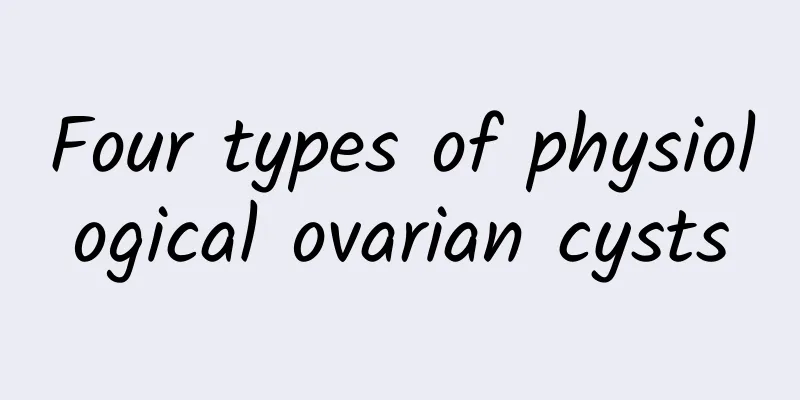Four types of physiological ovarian cysts

|
Physiological ovarian cysts are also called functional ovarian cysts. They are more common in women of reproductive age. The cysts may decrease or disappear with menstruation. However, enlarged cysts may also cause lower abdominal pain. There are four main types of cysts. 1. Hemorrhagic cyst Because the cyst grows too quickly, it can cause compression and traction on the ovaries and other surrounding tissues, which can cause rupture and bleeding. Blood accumulates in the ovaries to form hemorrhagic ovarian cysts. In this case, it takes a long time for the cyst to disappear. You can take medicine as prescribed by the doctor to alleviate the symptoms. In severe cases, surgery is required to remove the cyst. 2. Serous and mucinous ovarian cysts This type of cyst is difficult to disappear on its own. Generally, if it does not disappear after 3 months, surgical treatment is required. The secretory serous cells and mucous cells are embedded in the ovary after ovulation and continuously secrete fluid to form cysts. 3. Chocolate Cyst Endometriosis grows in the ovaries, forming a large amount of sticky coffee-colored liquid that looks like chocolate. Chocolate cysts can rapidly increase in size over time, constantly exerting great pressure and damage to surrounding tissues and organs, especially causing irreversible damage to ovarian tissue. 4. Teratoma The teratoma in functional ovarian cysts is a very special cyst, which is mostly solid and can have cystic cavities of varying sizes, containing derivatives of ectodermal, mesodermal or endodermal tissues such as hair, teeth, cartilage, smooth muscle, bronchial or intestinal wall, etc. The teratoma itself will not disappear on its own and may continue to grow. Most of them are benign cysts, and there is a 15% chance of causing ovarian torsion. In order to avoid unnecessary damage, it should also be treated in time. |
<<: Three conventional examination methods for cervical erosion
>>: What are the adverse effects of dysmenorrhea on women?
Recommend
What are the precautions after medical abortion?
After medical abortion, you should pay attention ...
Common complications of vulvar leukoplakia
If vulvar leukoplakia is not treated in time or t...
A brief analysis of common dietary taboos for acute cervicitis
When caring for patients with acute cervicitis, i...
Some inspection items for abortion
If you get pregnant unexpectedly, you will choose...
Why do women have anovulatory functional uterine bleeding?
In a normal menstrual cycle, the hypothalamus pro...
What is the cause of immune habitual miscarriage? Most people don't know the cause
There are many different reasons for the occurren...
How to regulate long menstruation? Super detailed regulation method
It is very normal for women to have menstruation,...
Causes of vulvar leukoplakia
What are the causes of vulvar leukoplakia? There ...
What are the dangers of endometriosis?
The uterus is likened to a woman's "litt...
How to perform superconducting visual painless abortion
How to perform superconducting visual painless ab...
What causes miscarriage?
After becoming pregnant, female friends need to g...
Which women are more likely to get uterine fibroids?
Uterine fibroids are a common gynecological disea...
Garlic protects the liver and lowers cholesterol... Do this one trick to eat it to get full anti-cancer power
The protagonist on the dining table is none other...
Explain what factors induce dysmenorrhea
The occurrence of dysmenorrhea has caused many wo...
Women should know the symptoms of irregular menstruation
Women often experience irregular menstruation dur...









